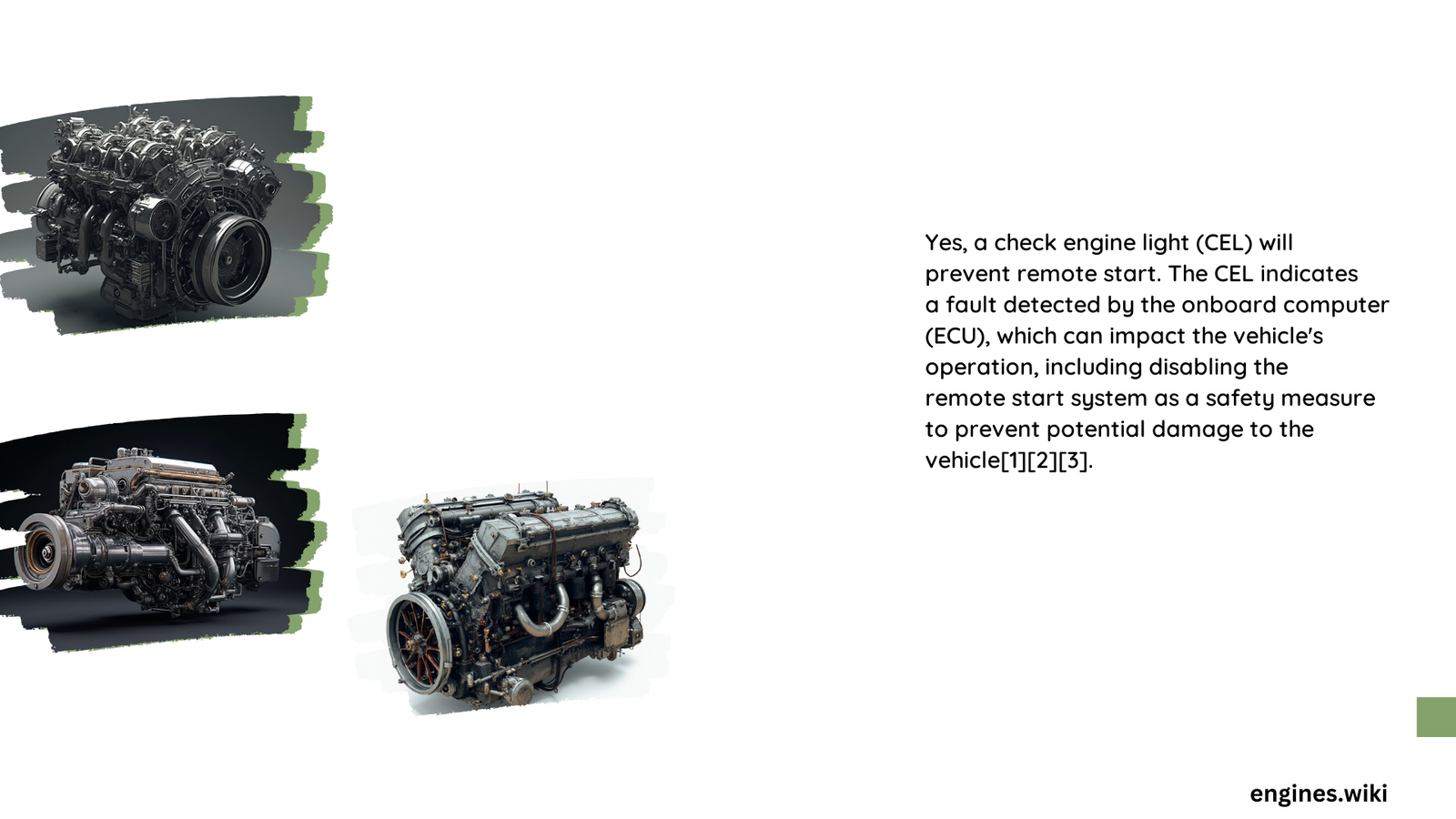Modern vehicles are equipped with sophisticated safety mechanisms that prevent remote start when potential engine issues are detected. A check engine light (CEL) serves as a critical warning system, automatically disabling remote start functionality to protect your vehicle from potential damage or operational risks. This protective measure ensures that drivers address underlying mechanical problems before attempting to start their vehicle remotely.
What Triggers Check Engine Light Remote Start Prevention?
When a vehicle’s onboard diagnostic system detects an anomaly in the engine or emissions system, it illuminates the check engine light and simultaneously blocks remote start capabilities. This safety protocol is designed to prevent potential mechanical complications or further damage.
Key Factors Preventing Remote Start
| Diagnostic Scenario | Remote Start Impact | Recommended Action |
|---|---|---|
| Minor Sensor Issues | Typically Blocked | Diagnostic Scan |
| Emission System Malfunction | Always Blocked | Professional Inspection |
| Critical Engine Problems | Immediate Prevention | Urgent Repair |
Why Do Vehicles Block Remote Start with Check Engine Light?

Vehicles implement remote start prevention for several critical reasons:
- Mechanical Protection
- Prevents starting a vehicle with potential serious mechanical issues
- Avoids potential catastrophic engine damage
-
Protects expensive vehicle components
-
Safety Mechanism
- Ensures driver awareness of underlying problems
- Prevents potential roadside breakdowns
- Maintains vehicle operational integrity
How to Resolve Check Engine Light Remote Start Limitations?
Resolving remote start restrictions requires systematic diagnostic approaches:
- Diagnostic Scan
- Use an OBD-II scanner to identify specific trouble codes
- Determine exact cause of check engine light
-
Clear codes if issue is minor
-
Professional Evaluation
- Schedule comprehensive vehicle diagnostic
- Have certified mechanic perform thorough inspection
- Address underlying mechanical concerns
Common Check Engine Light Scenarios Blocking Remote Start
Sensor-Related Issues
- Oxygen sensor malfunction
- Mass airflow sensor problems
- Throttle position sensor errors
Emission System Complications
- Catalytic converter inefficiency
- Exhaust gas recirculation (EGR) valve dysfunction
- Evaporative emissions system leaks
Cost and Time Considerations
Diagnostic Expenses
– Basic diagnostic scan: $50-$100
– Comprehensive vehicle inspection: $100-$250
– Potential repair costs: $150-$1,500 depending on issue complexity
Typical Resolution Timeframes
– Minor issues: 1-2 hours
– Complex problems: 1-3 days
– Severe mechanical complications: Multiple days to weeks
Preventive Maintenance Strategies
- Regular vehicle servicing
- Immediate attention to warning lights
- Annual comprehensive diagnostic checks
- Use high-quality automotive components
- Follow manufacturer-recommended maintenance schedules
Technical Insights
Modern vehicles utilize sophisticated onboard computer systems that continuously monitor engine performance. When a potential issue is detected, these systems automatically disable remote start functionality as a protective measure, ensuring driver safety and preventing potential mechanical damage.
Expert Recommendations
- Never ignore persistent check engine lights
- Use professional diagnostic tools
- Address warning indicators promptly
- Maintain regular vehicle maintenance
Conclusion
Understanding the relationship between check engine lights and remote start functionality is crucial for responsible vehicle ownership. By recognizing these safety mechanisms and responding proactively, drivers can maintain their vehicle’s performance and longevity.
